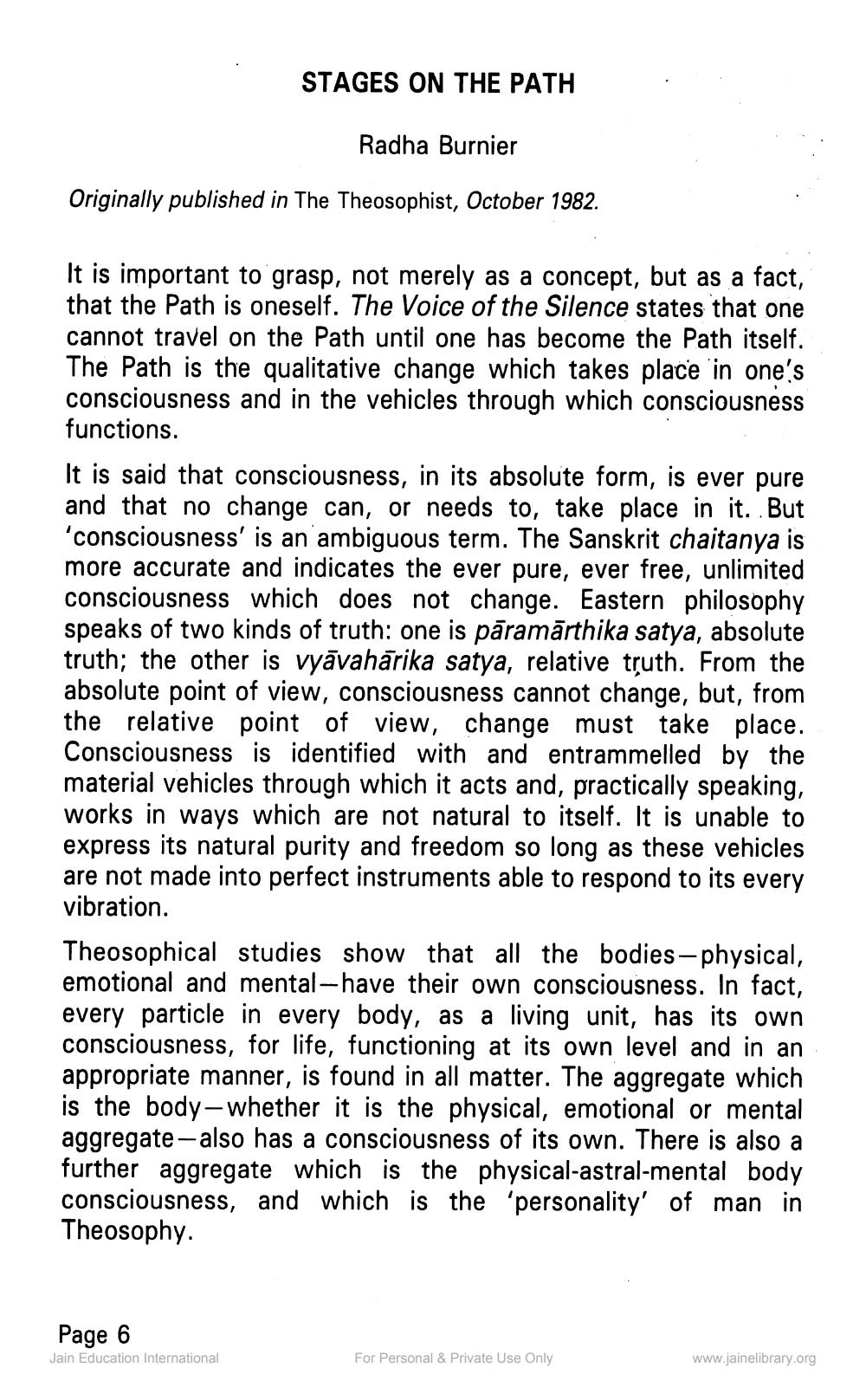Book Title: Theosophical Study Paper No 04 Author(s): Theosophical Society in Australia Publisher: Theosophical Society in Australia View full book textPage 8
________________ STAGES ON THE PATH Radha Burnier Originally published in The Theosophist, October 1982. It is important to grasp, not merely as a concept, but as a fact, that the Path is oneself. The Voice of the Silence states that one cannot travel on the Path until one has become the Path itself. The Path is the qualitative change which takes place in one's consciousness and in the vehicles through which consciousness functions. It is said that consciousness, in its absolute form, is ever pure and that no change can, or needs to, take place in it. But 'consciousness' is an ambiguous term. The Sanskrit chaitanya is more accurate and indicates the ever pure, ever free, unlimited consciousness which does not change. Eastern philosophy speaks of two kinds of truth: one is pāramārthika satya, absolute truth; the other is vyāvahārika satya, relative truth. From the absolute point of view, consciousness cannot change, but, from the relative point of view, change must take place. Consciousness is identified with and entrammelled by the material vehicles through which it acts and, practically speaking, works in ways which are not natural to itself. It is unable to express its natural purity and freedom so long as these vehicles are not made into perfect instruments able to respond to its every vibration. Theosophical studies show that all the bodies - physical, emotional and mental - have their own consciousness. In fact, every particle in every body, as a living unit, has its own consciousness, for life, functioning at its own level and in an appropriate manner, is found in all matter. The aggregate which is the body, whether it is the physical, emotional or mental aggregate - also has a consciousness of its own. There is also a further aggregate which is the physical-astral-mental body consciousness, and which is the 'personality' of man in Theosophy. Page 6 Jain Education International For Personal & Private Use Only www.jainelibrary.orgPage Navigation
1 ... 6 7 8 9 10 11 12 13 14 15 16
